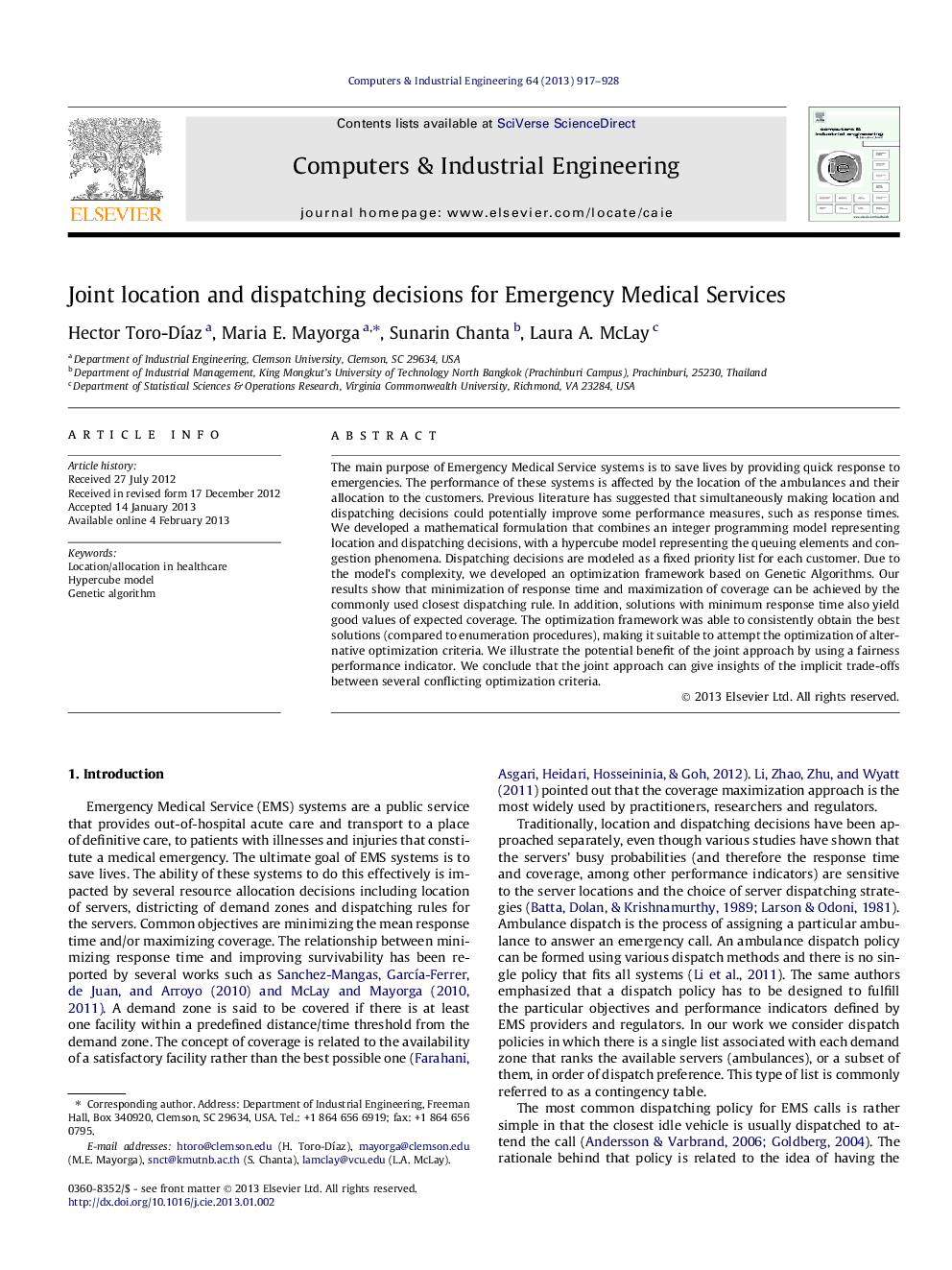| کد مقاله | کد نشریه | سال انتشار | مقاله انگلیسی | نسخه تمام متن |
|---|---|---|---|---|
| 1133968 | 956051 | 2013 | 12 صفحه PDF | دانلود رایگان |

The main purpose of Emergency Medical Service systems is to save lives by providing quick response to emergencies. The performance of these systems is affected by the location of the ambulances and their allocation to the customers. Previous literature has suggested that simultaneously making location and dispatching decisions could potentially improve some performance measures, such as response times. We developed a mathematical formulation that combines an integer programming model representing location and dispatching decisions, with a hypercube model representing the queuing elements and congestion phenomena. Dispatching decisions are modeled as a fixed priority list for each customer. Due to the model’s complexity, we developed an optimization framework based on Genetic Algorithms. Our results show that minimization of response time and maximization of coverage can be achieved by the commonly used closest dispatching rule. In addition, solutions with minimum response time also yield good values of expected coverage. The optimization framework was able to consistently obtain the best solutions (compared to enumeration procedures), making it suitable to attempt the optimization of alternative optimization criteria. We illustrate the potential benefit of the joint approach by using a fairness performance indicator. We conclude that the joint approach can give insights of the implicit trade-offs between several conflicting optimization criteria.
► Location and dispatching decisions for EMS systems were combined in a single model.
► Mean system response time and expected coverage were the basic optimization criteria.
► Heuristic solutions based on GAs were proposed to solve the exact model.
► Basic optimization criteria do not benefit from the joint approach.
► Alternative optimization criteria will benefit but there are trade-offs to consider.
Journal: Computers & Industrial Engineering - Volume 64, Issue 4, April 2013, Pages 917–928